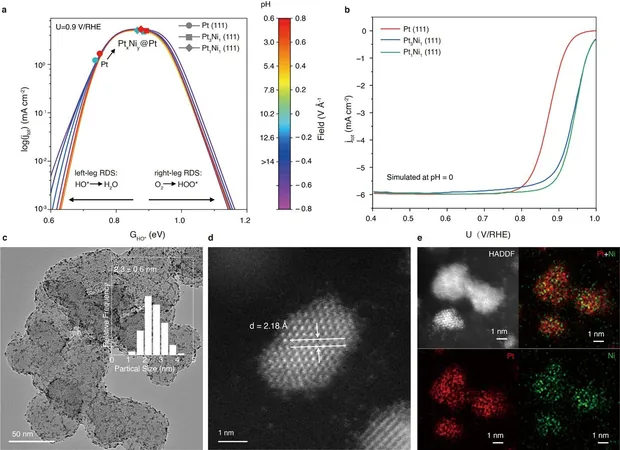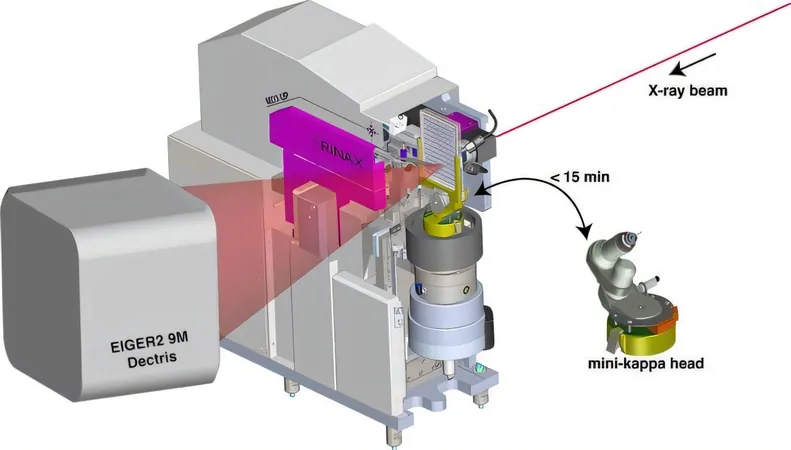
Revolutionary GLP-1 Drugs May Transform Treatment for Alcohol Use Disorder!
2024-11-13
Author: Rajesh
Introduction
A groundbreaking Swedish study has revealed that GLP-1 receptor agonists, commonly used in managing type 2 diabetes and obesity, may also offer significant benefits for individuals suffering from alcohol use disorder (AUD). Researchers found compelling evidence suggesting that medications like semaglutide (branded as Ozempic or Wegovy) could drastically reduce the risk of hospitalization related to AUD.
Study Findings
In a study encompassing over 200,000 individuals diagnosed with AUD, those prescribed semaglutide exhibited a staggering 36% decreased risk of being hospitalized due to alcohol-related issues compared to patients not taking GLP-1 agents (adjusted hazard ratio: aHR 0.64, 95% CI 0.50-0.83). Similarly, liraglutide (marketed as Victoza or Saxenda) also showed promise, linking its use with a 28% reduced risk of hospitalization from AUD (aHR 0.72, 95% CI 0.57-0.92).
Comparison with Traditional Treatments
What's truly remarkable is the suggested efficacy of these GLP-1 medications outshining traditional AUD treatments like naltrexone, disulfiram, and acamprosate, which only produced a modest reduction in hospitalization risk (aHR 0.98, 95% CI 0.96-1.00). However, researchers advise caution when interpreting these findings, pointing out that the two groups of patients were not perfectly equivalent, which could influence the results.
Potential in Addressing Other Addictions
The implications extend beyond merely treating AUD. There's an emerging body of research indicating that GLP-1 agonists might play a significant role in addressing various addiction-related disorders, including opioid and tobacco use disorders. The potential connection between GLP-1 receptors and the brain's craving and reward pathways suggests that these medications could become a critical component in combating different forms of addiction.
Genetic Variations and Mechanisms
Interestingly, genetic variations in the GLP-1 receptor have shown associations with a higher risk of AUD, hinting at a biological undercurrent that could explain the effectiveness of these treatments. A recent review even suggested that GLP-1 agonists may help curb addictive behaviors by modulating dopamine levels in the brain—an exciting prospect for addiction therapy.
Study Demographics
The extensive data pool for this study reflected real-world implications, as the researchers examined Swedish health registries from January 2006 through December 2023. The average participant in the study was a 40-year-old male, with just over half showing a history of hospitalizations due to AUD during an average follow-up of nearly 8.8 years.
Broader Impact on Substance Use Disorder
For those using semaglutide, not only was there a 32% decreased risk of any substance use disorder-related hospitalization, but liraglutide was associated with a similarly advantageous outcome—though slightly less effective. Remarkably, neither GLP-1 drug was linked to an increased risk of suicide attempts, contrasting with traditional AUD medications, which exhibited a concerning association with a higher likelihood of such attempts.
Need for Further Research
While this research is illuminating the potential for GLP-1 agonists in treating AUD, its observational nature means that further randomized clinical trials are essential to definitively establish their role in addiction therapy. As scientists continue to explore the vast potentials of these drugs, the hope is that they can be dispensed not just for obesity and diabetes, but as groundbreaking tools in the fight against alcohol dependence.
Conclusion
The future of addiction treatment may very well lie in the unexpected benefits of GLP-1 drugs—stay tuned for more thrilling developments in the realm of science and medicine!




 Brasil (PT)
Brasil (PT)
 Canada (EN)
Canada (EN)
 Chile (ES)
Chile (ES)
 España (ES)
España (ES)
 France (FR)
France (FR)
 Hong Kong (EN)
Hong Kong (EN)
 Italia (IT)
Italia (IT)
 日本 (JA)
日本 (JA)
 Magyarország (HU)
Magyarország (HU)
 Norge (NO)
Norge (NO)
 Polska (PL)
Polska (PL)
 Schweiz (DE)
Schweiz (DE)
 Singapore (EN)
Singapore (EN)
 Sverige (SV)
Sverige (SV)
 Suomi (FI)
Suomi (FI)
 Türkiye (TR)
Türkiye (TR)